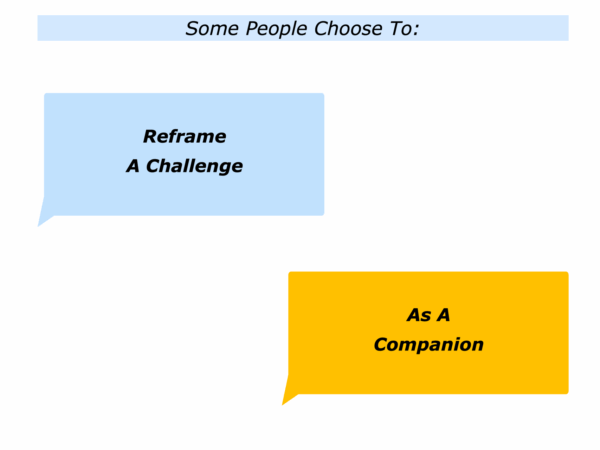
Some people reframe a challenge as a companion. They may do this when managing an illness, climbing a mountain, doing a project or tackling another challenge in their lives or work.
Some people may actually talk to the challenge and have conversations with it on the journey. They may also see it as an opportunity to keep developing as a person or as a professional.
Much depends, of course, on the kind of challenge they are facing. They may face a life-affirming challenge they find stimulating. They may also sometimes face a life-attacking challenge.
Different people tackle these challenges in different ways. Some follow the classic Three C framework. They focus on Clarity, Creativity and Concrete Results.
The following section looks at how people may follow elements of this approach in different situations. They may do so by focusing on the following themes.
Clarity
Different people react differently when facing a life-affirming or life-attacking challenge. Much depends on whether they have proactively chosen to tackle a stimulating challenge or they are on the receiving end of a shock.
Some people then go into Flow Mode. They buy time to think, see things in perspective and clarify their options. Settling on their chosen way forwards, they then aim to flow, focus and finish successfully.
Some people go into the well-known Fight or Flight Modes. They may react with anxiety, denial or other responses. There may come a point, however, when they decide to do their best in the situation.
Imagine that a person is facing a challenge. Bearing in mind the things they can control, they may start by aiming to establish clarity. They will clarify the real results they want to achieve in the situation.
A caring person who is embarking on a project may aim to do superb work that helps people or the planet. A mountain rescuer will aim to save life and get stranded climbers down the mountain safely.
An environmentalist may aim to restore a piece of neglected land and help it to flourish in a sustainable way. A trusted advisor may aim to pass on knowledge that helps a person to shape a positive future.
A mediator who has been asked to help in a conflict may aim to, as far as possible, find a win-win solution. A person who has a terminal illness may aim to make the most of each day and die with dignity.
Different people establish clarity in different ways. Bearing in mind the things they can control when tacking the challenge, some people explore the following themes.
What is the challenge I want to tackle? What are the real results I want to achieve in the situation? What will be the benefits of achieving these goals? What will be happening that will show I have achieved the picture of success?
Imagine that a person has explored these themes. Bearing in mind the results they want to achieve, they may then list these in order of priority. This can lead to them producing something like the following.
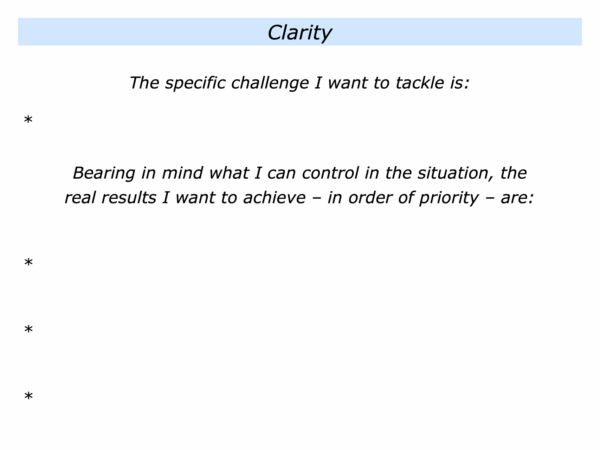
Imagine that a person has taken this step. They may then move on to the next stage when tackling a challenge.
Creativity
Some people enjoy finding creative solutions to challenges. They may do this by brainstorming ideas, going for a walk, studying what works or doing things that stimulate their creativity.
Some people consider ideas in a cerebral way. Bearing in mind the results to achieve, they aim: a) to study what works in such situations; b) to then explore other possible solutions.
Some people see the challenge as a companion on their journey. They may then almost go into a creative dialogue with the specific challenge they are tackling.
The climber may look at a rock face and ask: ‘How can I climb you?’ They may then have a back and forth where they almost bouncing ideas off the ascent they are facing.
The patient embarking on a course of radiotherapy may ask: ‘How can I do positive things each day that give me the energy to manage the treatment and regain my health?’ They then make a plan to follow this schedule.
The golfer may address the ball and ask: ‘How can I get you onto the putting surface?’ They may then visualise various scenarios of striking the ball and it making its way to the green.
Gary Klein has written several books that touch on these themes. These include The Power of Intuition and Seeing What Others Don’t.
Bill Breen wrote an excellent article about Gary’s work for The Fast Company magazine. He explained how Gary has studied firefighters, medical staff and many people who make decisions in pressure situations. Speaking with Bill, Gary explained this in the following way.
“I noticed that when the most experienced commanders confronted a fire, the biggest question they had to deal with wasn’t ‘What do I do?’ It was ‘What’s going on?’
“That’s what their experience was buying them – the ability to size up a situation and to recognize the best course of action.”
Gary goes on to outline the steps such people then take in high pressure situations.
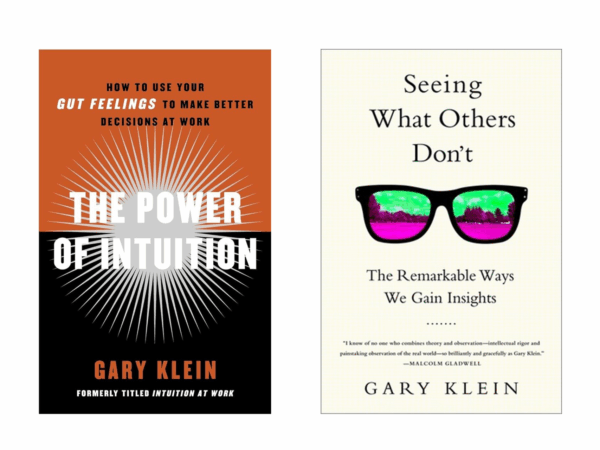
They reach into their experience – going through it on ‘hyperdrive’ – to scan previous scenarios and see what lessons might apply to the present situation.
They are, at the same time, fully present: they look for patterns and clues to piece together what is happening.
They choose what they believe would be the best course of action and play scenarios about how this might work in practice.
Describing how Gary talks about expert firefighters, Bill’s article outlines what such people do next.
Once they make a decision, they evaluate it by rapidly running a mental simulation. They imagine how a course of action may unfold and how it may ultimately play out.
The process is akin to building a sequence of snapshots, says Klein, and then observing what occurs.
“If everything works out okay, the commanders stick with their choice. But if they discover unintended consequences that could get them into trouble, they discard that solution and look for another one.
“They might run through several choices. They rapidly evaluate each choice on its own merits, even if they cycle through several possibilities. They don’t need the best solution. They just need the one that works.”
Different people use their creativity in different ways when tackling a challenge. Bearing in mind results to achieve, some explore the following themes.
What are the possible options going forwards? What are the pluses and minuses of each option? On a scale 0-10, what is the attractiveness of each option?
Are there any other creative solutions? What is the route – or combination of routes – I want to follow? How can I translate this into action?
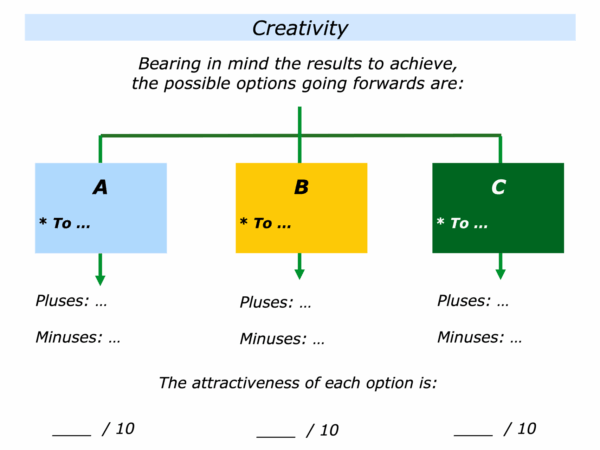
Concrete Results
People who reframe a challenge as a companion on their journey may aim to achieve certain goals. They then do their best to reach their chosen destination.
Sometimes this may be a personal goal. They may want to take care of their health, rebuild a relationship, manage a setback or achieve another aim.
Sometimes this may be a professional goal. They may want to recover from losing a job, rebuild a poor performing team, start their own business or achieve another aim.
Different people follow different strategies for aiming to reach their goals. Some look back and revisit their positive history. They take the following steps.
They clarify when have tackled a similar challenge in the past and finished successfully.
They clarify what they did right then – such as the principles they followed and how they translated these into action – to finish successfully.
They clarify how they can follow similar principles – plus maybe add other skills – to tackle the present challenge and finish successfully.
Such people settle on the strategy they want to follow. They rehearse following this and managing any problems. Moving into action, they then aim to flow, focus and finish successfully.
There are many ways to live life. One approach is to reframe a challenge as a companion on the journey. It is then to do your best to achieve your chosen goals.
Let’s return to your own life and work. Looking ahead, can you think of a situation where you may want to follow elements of this approach? How can you do this in your own way?
If you wish, try tackling the exercise on this theme. This invites you to complete the following sentences.
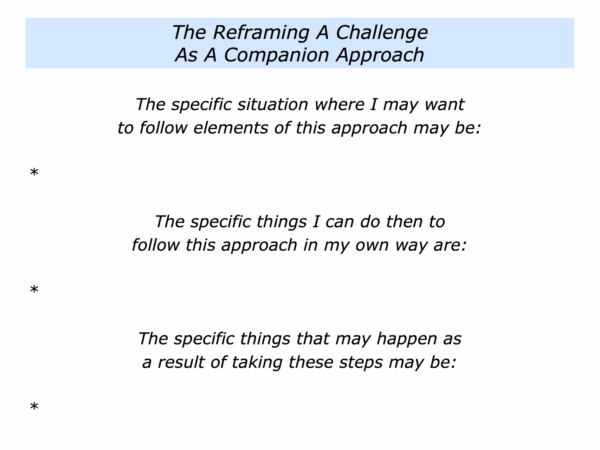

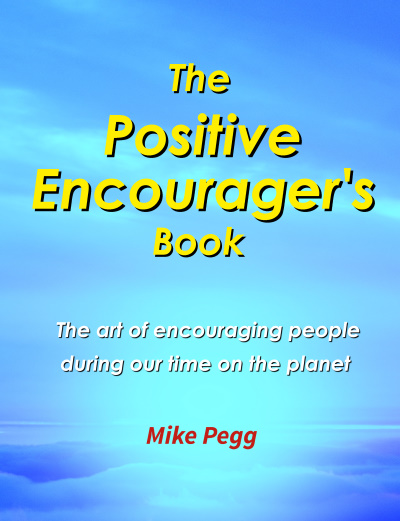
Leave a Reply